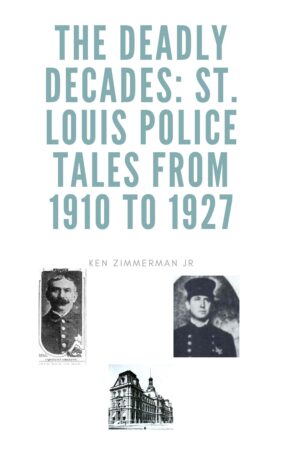Ira Cooper Solves Jewel Robbery
Nyob rau lub kaum ib hlis 10, 1924, Mrs. A.W.W.. Stickney tawm hauv lub St. Louis lub teb chaws qws tsoo, Thaum nws tau approached los ntawm ob tug neeg Asmeskas-American txiv neej. Tus txiv neej lighter skinned hais Mrs. Stickney tig dua nws jewels los yog nws yuav coj lawv los ntawm nws. Fearing kom nws muaj kev ruaj ntseg, Mrs. Stickney tso tus txiv neej nws jewelry, valued ntawm tus nqi $17,000.00, thiab $85.00 nyob rau hauv cov nyiaj ntsuab.
Mrs. Stickney reported the robbery to the St. Louis Police, who assigned Sgt. IRA L. Cooper and his team to the case. Sgt. Cooper oversaw a team of highly successful African-American detectives, who solved many cases over the years.

Alonzo Dowell, one of the robbers, los ntawm cov pej xeem sau ntawv
Based on the description of the robbers and the method used, Sgt. Cooper thought he knew who robbed Mrs. Stickney. Sgt. Cooper’s suspicions were confirmed, when an informant came forward with critical information. A chauffeur, working for Mrs. Stickney’s friend, told a dealer in stolen goods about Mrs. Stickney’s jewelry. The fence contacted two men, who he provided with the information to rob Mrs. Stickney. One of the men was Sgt. Cooper’s suspect.
Sgt. Cooper, Detective Johnson and Detective Harris arrested Alonzo Dowell, a 29-year-old man, who was out on bond from two other robbery charges. Dowell admitted the robbery and implicated Homer Brown as his accomplice. Cooper said as soon as he heard the description, he suspected Alonzo Dowell.
Sgt. Cooper and his men were able to recover Mrs. Stickney’s jewelry as well as solving the case. For their efforts, Sgt. Cooper, Detective Johnson and Detective Harris received a $3,000 reward. $1,000 came from Mr. Stickney and $2,000 was provided by the St. Louis lub teb chaws qws tsoo. Sgt. Cooper donated $600 to the Police Association Relief Fund and then divided up the $2,400 with his men.
Nyob rau lub rau hli ntuj 1925, Alonzo Dowell and Homer Brown were sentenced to 25 xyoo nyob rau hauv tsev rau txim rau tus nyiag. Homer Brown continued to declare his innocence both before and after the trial. He was paroled in 1935 and stayed out of trouble. Nyob rau hauv 1941, he was granted his voting rights again, which may have indicated some official doubt about his guilt. Mrs. Stickney identified Dowell but never could say Brown was the other man.
Alonzo Dowell was paroled in 1939. Unlike Homer Brown, Dowell went back to his criminal ways. After committing several burglaries, Dowell was returned to prison in 1942 to serve the remainder of his original sentence and the new sentences. Dowell died in the prison hospital on March 3, 1947 from the effects of pneumonia. Dowell was 50 xyoo.
Sgt. Ira Cooper and his team solved many difficult crimes. This case is only one of their cases but it was one of the most newsworthy.
Koj yuav tawm ib saib los nug cov lus nug txog qhov no, los yog tej qho hauv tshooj nram qab no, ntawm kuv Facebook phab.
Qhov chaw: St. Louis Dispatch tom qab, Kaum ib hlis 28, 1924 ib tsab, p. 1, Hlis ntuj nqeg 2, 1924 ib tsab, p. 7, Hlis ntuj nqeg 8, 1924 ib tsab, p. 13 and July 24, 1941 ib tsab, p. 8. St. Louis Star-zaug, Kaum ib hlis 28, 1924 ib tsab, p. 2, Kaum ib hlis 29, 1924, p. 3 thiab lub rau hli ntuj 18, 1925 ib tsab, p. 1. Missouri Penitentiary Database and Missouri Death Certificate Database.
PIN rau nws

